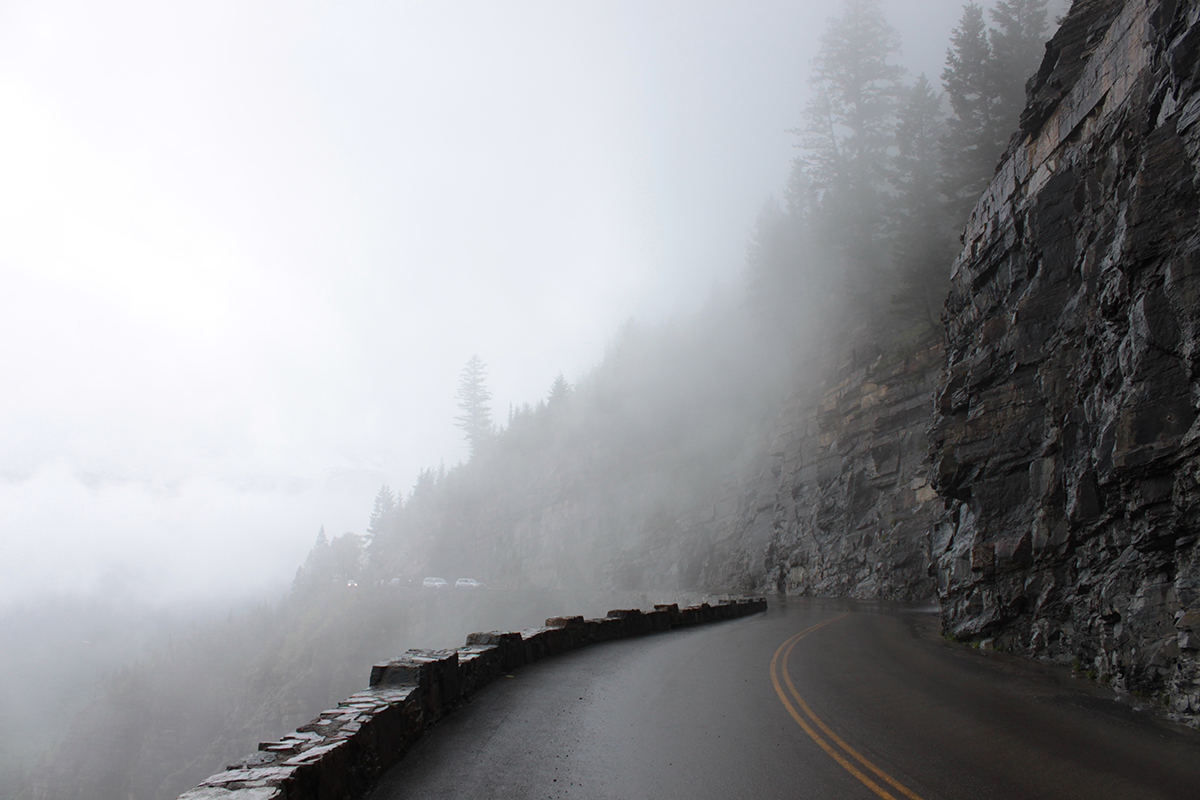
A History of Glacier’s Iconic Byway
While people come for the stunning natural scenery, the Going-to-the-Sun Road and its rich history is an attraction in its own right
In the 88 years since Going-to-the-Sun Road’s dedication, the thrill of driving Glacier National Park’s scenic byway has not diminished. As one of the world’s most dramatic roadways, it entices millions of motorists to queue up annually at the entrance gates and venture into the park’s wild interior, transported on a two-lane portal of pavement to an otherworldly landscape.
The majority of visitors to the Sun Road observe the spectacular transmountain expanse during the busy summer months, and sometimes the engineering marvel’s textured history is eclipsed by the peak-studded views.
Ask a local about their favorite spot along the Going-to-the-Sun Road and you’ll get a range of answers. For some it’s a few miles up the road from St. Mary, where you can take in the view of Wild Goose Island in the middle of Glacier National Park’s second biggest lake. Others might recommend Bird Woman Falls, a 492-foot high drop between Mount Oberlin and Mount Cannon west of Logan Pass.
Both locations depict the stunning beauty that has made Glacier Park a destination for well over a century. But visitors should not overlook what is just below their wheels: The Going-to-the-Sun Road is a remarkable attraction all unto its own.
In the years immediately following the National Park Service’s creation in 1916, Director Stephen Mather led an effort to make the parks’ more accessible to the masses. In some cases, that meant improving pre-existing roads and in other instances it meant building new ones all together. In 1918, engineers designed a highway through Glacier Park that would allow people who didn’t want to spend days hiking to enjoy the wonders within. In 1921, Congress appropriated $100,000 to begin construction, worth about $1.2 million today. Workers generally followed the path that was first proposed three years earlier, with one major exception. The original plan called for 15 switchbacks up the west slope of Logan Pass. To an engineer, the multiple switchbacks to the pass made perfect since but it would mean the road would have avoided some of the most spectacular views, including the beloved Bird Woman Falls. According to legend, Mather rejected that plan and redrew the road on its current alignment along the steep alpine area known as the Garden Wall. The road was constructed with a maximum grade of 6 percent, which is about as much as a vehicle could make back in 1921.
Construction of the road continued for more than a decade and it was finally completed in 1932 with a final price tag of $2 million. Unlike the original plan that had the Sun Road meandering through the trees on its way to the Continental Divide at Logan Pass, the final product was literally built into the mountains, with arch bridges and barriers that reflect the landscape around it. The road is so remarkable that in the 1980s it was designated a National Historic Civil Engineering Landmark and included in the National Register of Historic Places, the first American road to ever receive both honors.